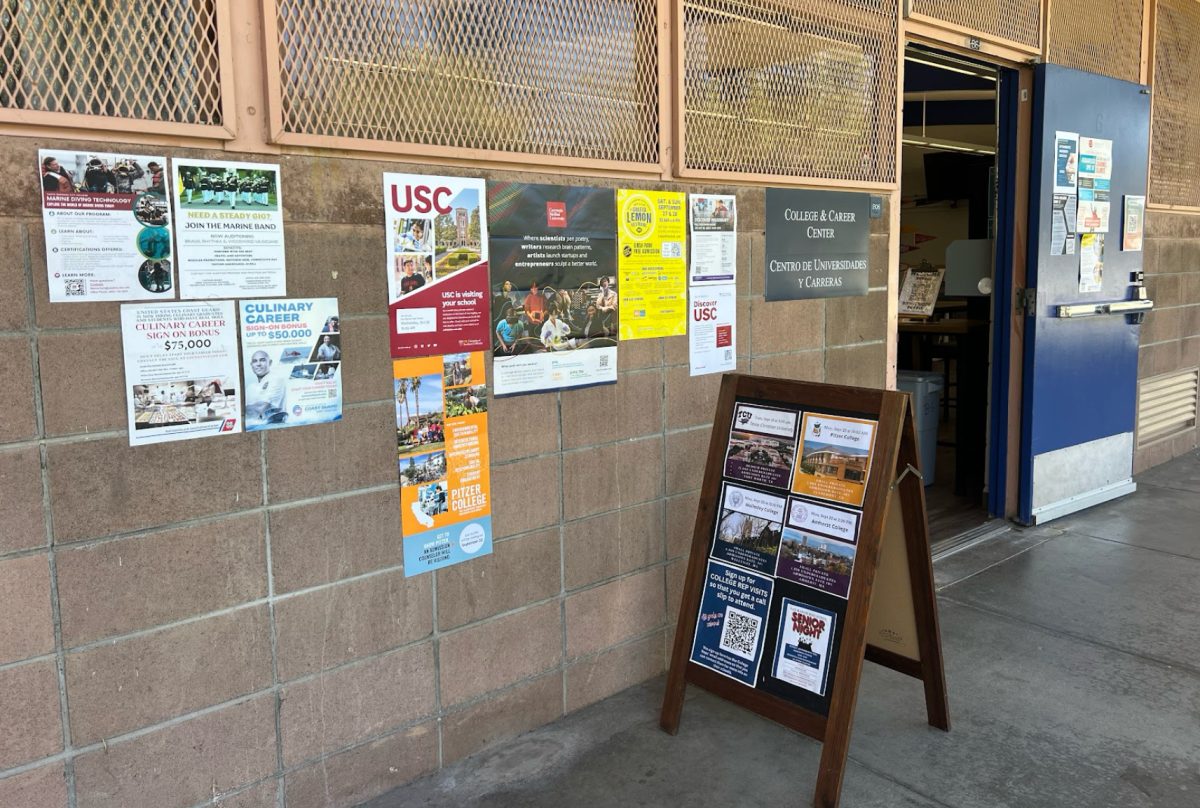For all students in high school, standardized testing is nothing new. Most public schools start these types of exams at around the third grade. So, when the time comes to turn in their college applications, seniors would turn in their test scores as an additional data point for admissions offices. One of the most commonly referred to tests across the U.S has been the SAT, a three hour long exam that tests students’ abilities in topics such as math, reading, and writing. This assessment has been a staple part of college admissions for many decades. In the past few years, however, many colleges have removed the requirement of sending in scores from this exam as a part of their application process.
This shift officially started as a way to ease college applications during the lockdowns for the graduating class of 2020 as well as a response to the varsity blues scandal. This scandal was surrounding parents influencing college admissions through bribery. Even with the passing of a few years, many universities have decided to keep this new policy of not requiring any SAT or ACT scores, not only to decrease stress but to also ensure a more fair admissions system. In fact, over 84 institutions across the US have turned to test-optional or even test-blind policies.
This new SAT policy has also made colleges more accessible to a far wider range of students. This is particularly true for more selective schools that in the past would have required high SAT results and now look more toward other factors of the application like GPA and extracurriculars to make their decisions.
“For students who do not have access to it because of the cost or not having the time over the summer to dedicate to these intensive classes because they have to provide for their families, having lots of schools test blind or test-optional in a way levels the playing field,” said Victoria Chow, a San Marcos junior.
With this new system, more opportunities are open to students since the admission officers conduct more detailed wholistic reviews. According to US News, “Fifteen percent of students reported that they applied to a college specifically because it was test-optional, for instance, according to the EAB report. That number was higher among applicants of color: 24% of Black students, 15% of Asian students, and 21% of Hispanic students applied to a school because of its test-optional policies.”
An application process that truly embodies making applications easier and more accessible to a wider range of students in the UC system. In past years, they have gone fully test blind and no longer provide an option to submit SAT or ACT scores. They have also created one synchronous application for all UCs, making the applications a far less time consuming process. University of California statistics show, that the freshman applicants rate grew by 16.8 percent from 2020 to 2021. The number of freshman applicants also reached an all-time high of 210,840 for the fall of 2022.
According to the Daily Bruin, in 2022, the number of freshman applicants to UCLA rose from 149,700 in contrast to the 108,877 freshman applicants in 2022. This shows a positive aspect of the new UC application policy that does not require test scores.
“I am pretty sure the UCs did not even give the option which I thought was really great because it gave everyone the same factors impacting their admission to the school. Personally, it did not affect me much as I did not submit ACT/SAT scores to any schools,” said Olivia Dozer, a 2022 San Marcos graduate.
Despite the many upsides in making college more attainable to those who do not have high SAT scores, this new structure tends to add higher pressure to other portions of the college application. Since applications focus on the student as a whole, there is new stress added onto things like extracurriculars, grades, and types of classes that students take. This creates a shift in the sense that colleges now focus more on the types of things that students do throughout their high school careers as markers for qualification rather than heavily relying on exams for that data. Without SATs as a marker, freshman college applications are becoming more competitive.
Matthew Chung, a San Marcos junior said, “It adds a lot of pressure and makes me feel like my options are limited.”
This is a common concern for many students applying during this time.
The test blind or test optional standards in many universities throughout the past few years have offered a new perspective on the whole college application process. This new perspective tends to make the application more competitive but provides a fairer experience for all students despite their background or economic status. Students that are driven and have impressive applications despite high SAT scores now have as much of a chance to go to a good college. This can prove to be a very positive change since college admissions will not rely on how well a student did on an exam but rather focus on the suitability of each separate applicant by observing their accomplishments over four years rather than three hours.




























